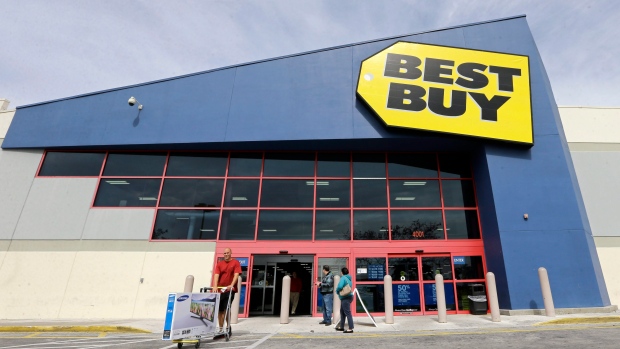Aug 23, 2016
Best Buy shares soar on surprise rise in comparable-stores sales
Reuters

Best Buy Co Inc reported a much higher-than-expected quarterly profit on strength in health and wearable items like smartwatches, and the largest U.S. electronics retailer raised its earnings outlook, sending its shares up nearly 17 per cent.
The results bucked a string of weak performances in the electronics category by competitors like Target Corp and Wal-Mart Stores Inc.
Besides smartwatches, Best Buy said demand rose for items like home theater systems and major appliances, categories where Target and Wal-Mart typically do not have a significant market share, according to analysts. Sales declined for mobile phones and gaming, where the other retailers also have a sizeable presence.
Mobile phone sales have fallen industrywide due to a dearth of new products. Best Buy Chief Executive Officer Hubert Joly said he expected demand to increase this quarter and next as scheduled product introductions draw consumers.
Apple Inc's long-awaited iPhone 7 is set for availability next month. Last week, Target blamed its poor performance in part on lower demand for electronics due to a drop in demand for Apple products.
Best Buy's online sales as a percentage of domestic revenue increased to 10.6 per cent from 8.6 per cent in the second quarter ended on July 30, helped by faster shipping and improvements in the checkout process and search functionality, Joly said.
Excluding special items, earnings of 57 cents per share beat the analysts' average forecast of 43 cents, according to Thomson Reuters I/B/E/S.
Sales at established stores rose 0.8 per cent from a year earlier. Analysts had expected a 0.60 percent decline, according to research firm Consensus Metrix.
Best Buy said it expected low-single-digit percentage growth in fiscal-year operating income, compared with a previous forecast of "approximately flat" results.
The company gave a third-quarter profit and revenue outlook roughly in line with analysts' estimates.
Revenue rose slightly to US$8.53 billion in the second quarter, snapping a three-quarter streak of declines. Analysts on average had expected US$8.40 billion.
Net income increased 20.7 per cent to US$198 million from US$164 million.
International revenue declined 1 per cent but rose 4.1 per cent on a currency-neutral basis.




